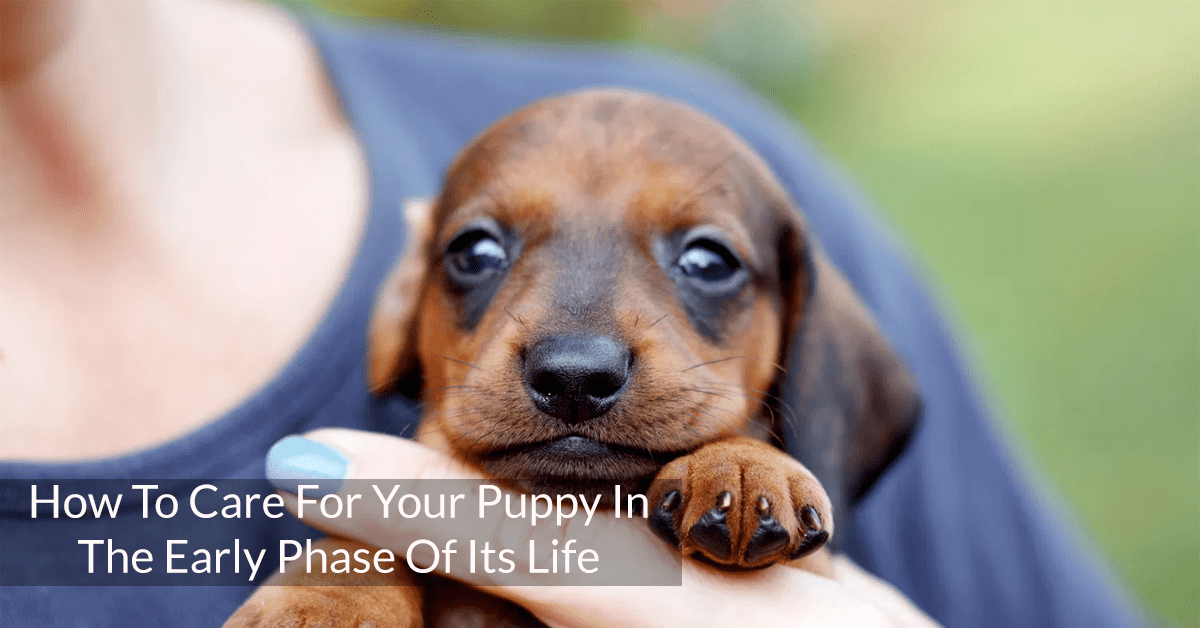In the early days of the puppy’s life, a puppy’s main activities keep itself warm, feeding and developing social interaction with the environment. Most of the time, the mother dog can observe all these essential support requirements to her puppies. But suppose a pup is separated from its mother due to any apparent reason like rejection from the mother side and low or no milk production. In that case, one can adopt a pup to provide all these necessities and give it an ambient environment.
The ideal age for adoption:
Before the age of three months, puppies in most breeds are very prone to infections as there is very low-level active immunity. For up to three months, a pup is dependent on the passive immunity provided by the mother. After three-month antibodies acquired from the mother start to disappear, and its immune system starts to work. A puppy’s immune system remains underdeveloped till the age of fourteen weeks. It means almost fourteen weeks are required to mature the immune system of a puppy fully.
Temperature maintenance in a puppy:
Different research prove that most stray baby dogs die in the early few days of life due to the cold environment. In this phase, their thermoregulatory system is almost inactive, so a warm ambient environment is a must condition at this period of their life. If the mother dog is present, she will provide them a friendly atmosphere by holding and placing them with her body. But if any person adopts a pup, they must give the puppy a warm ambient place to ensure a stress-free environment and better growth.
Stress in a puppy:
Newly born pups are very prone to stress. And any deviation from the ideal conditions such as temperature, feed, and air quality. This stress has a severe effect on the general well-being and growth rate of a pup. Moreover, it is proved from the research that adverse events in early life and at the time of weaning (in case of adoption) put a very harsh stress effect on the blood profile of the subject and changes the activities of different enzymes such as a lysosomal enzyme. Any alteration in these enzymes’ activities leads to various conditions such as accelerated aging process, metabolic disorders like diabetes, malignancies, chronic inflammatory and neurodegenerative disorders such as Parkinson’s and Alzheimer’s disease, retarded growth, wrinkles in the skin. So, the time up to three months of age is crucial regarding these factors, and one should minimize the stress by providing a stress-free ambient environment and diet to the pups. It will also improve pup-person interaction and familiarity.
Feed newborn puppies:
Mother’s milk provides all the necessary nutrients in the first few weeks of life. Milk produced at the time of parturition is termed colostrum and is enriched with immunoglobulin; hence is an excellent source of immunity in newly born puppies. If a pup is an orphan or a mother is away from the freshly born due to any reason, one can see a veterinarian have complete guidance about the method and type of feeding. Most of the time, puppies are fed with bottle-feeding, but it can be harmful if done improperly. In the early few weeks, one can provide the puppies with the help of a syringe or feeding nipple. Always feed a newborn puppy on commercially available canine milk replacer if the dam’s (mother) natural milk is not available. Make sure to use correctly formulated replace at a specific recommended age, as milk from other species like cow or wrong formulation can result in GIT problems like diarrhea.
Frequency of eating in puppies:
In the first few days of life, puppies feed on milk approximately after every two to three hours, but they take a small diet quantity. But the frequency of feeding decrease as their age progress. At the age of four weeks, they face a transition in the feeding from liquid to a solid diet. Upon completion of this transition, dry feed pallets for dogs can be blended with milk or water to form the gruel and can easily be fed many times to the puppy. At the age of eight to ten weeks, usually, puppies become independent of milk replacers and take the usual dry pup feed. The exact quantity and schedule of feeding can be finalized after a complete checkup by a veterinarian.
How Much Should a Newborn Puppy Weigh?
Birth weight is a breed dependent factor. Different breeds have different body weights at the time of birth. In the first one to two weeks, a puppy’s weight can become double or triple, and later on, it is considered a healthy gain if a puppy is gaining the weight at the rate of 10-15% of birth weight. Pups showing low weight gain may not be able to survive.
The help of a puppy for the bathroom:
In the early period of life in a dog, puppies can’t pass urine or feces without help. The mother dog usually provides this help as she intuitively stimulates by licking their pups’ genitalia to waste material. If a person is taking care of an orphan puppy, their caretaker should do this job. One can use a moist finger to rub the anus and genital organ after feeding to stimulate the excretion. After a few days, the puppy will be able to excrete on its own.
Initial Veterinary checkups and vaccinations in pups:
Healthy puppies get the standard vaccinations at the age of six weeks. On the initial visit to the vet, a general physical checkup and deworming are recommended, and then your veterinarian can plan the vaccination schedule for the puppy. One should immediately see the vet if unusual kinds of signs appear like decrease or no appetite, slow weight gain, breathing-related issues, sneezing and coughing, pale mucous membranes, serous discharge from eyes, and retention of feces or urine and diarrhea.
Dogs should have regular visits to the vet at all phases/stages of life. The booster of vaccines should be administered at the scheduled time to keep their immunity in a good state. The vaccination protects against parvovirus, leptospirosis, hepatitis, and canine distemper. Always be up to date with the usage of booster doses.
A quick checkup is recommended if any deviation from normal parameters like increase temperature and disturbed respiration and heartbeat is recommended. With the increase in age, animals can show different kinds of symptoms like altered hearing and eyesight, decreased feed intake, and stiffness in joints. So it’s highly recommended to have a checkup of your pup if such signs are observed.
Dentistry is also an essential area in the dog’s health. Please closely monitor the health of the gums and teeth of your dog and immediately see the vet if there is any swelling, plaque, inflammation, or redness on the gums. Dental toys are an excellent option to keep dental issues at a minimum. Canine toothbrushes and pastes are also available at the market.
Regularly, keep checking for any ear issues. If any discharge, wax, or smell from the ear or your dog is exhibiting unusual head activity, then immediately consult your veterinarian.
Keep the worm away from the dog. Have a regular deworming schedule to get rid of this issue and keep your dog healthy. Deworming every three months is recommended.
Similarly, keep your safe from ticks, mites, and fleas. It’s tough to get rid of them. They are breeding in the bedding area. So, plan a wise schedule to kill them regularly, and your dog must have preventive care at regular intervals.
References:
Srinivasan, K. (2013). The biopolitics of animal being and welfare: dog control and care in the U.K. and India. Transactions of the Institute of British Geographers, 38(1), 106-119.
Prescott, M. J., Morton, D. B., Anderson, D., Buckwell, A., Heath, S., Hubrecht, R., … & Thompson, P. (2004). Refining dog husbandry and care. Lab Anim, 38(Suppl 1), 1-96.
Laflamme, D. P., Abood, S. K., Fascetti, A. J., Fleeman, L. M., Freeman, L. M., Michel, K. E., … & Willoughby, K. N. (2008). Pet feeding practices of dog and cat owners in the United States and Australia. Journal of the American Veterinary Medical Association, 232(5), 687-694.
Rich, J. E. (2002). U.S. Patent No. 6,365,133. Washington, DC: U.S. Patent and Trademark Office.



